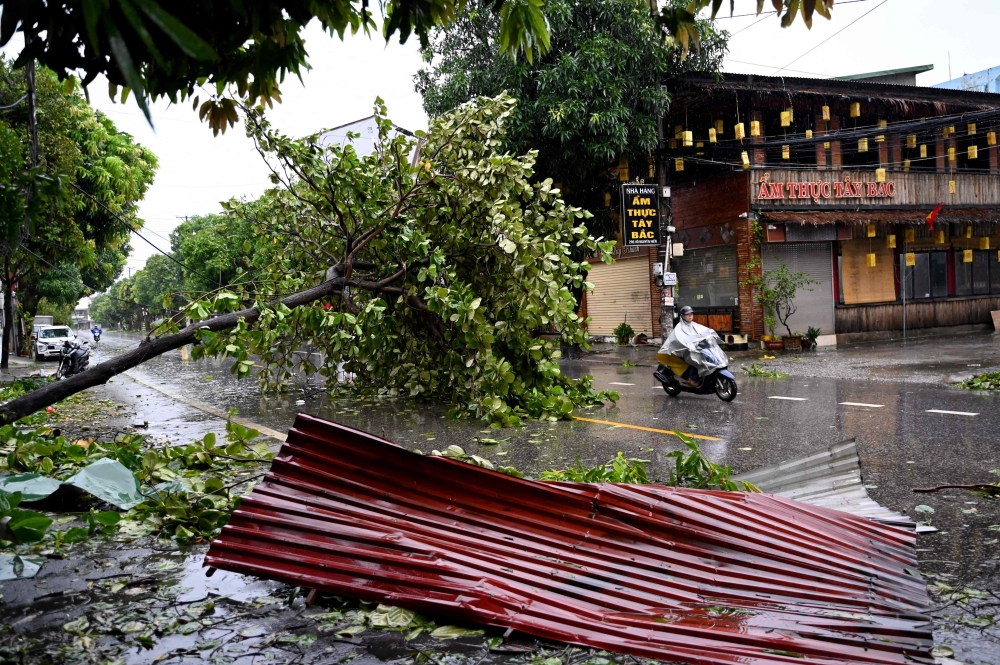AUGUST 29 — The unrelenting march of climate change is nowhere more palpable than in Southeast Asia and the South Pacific. Both regions, geographically exposed and institutionally underprepared, face the brunt of intensifying natural disasters. Typhoons, floods, earthquakes, and rising sea levels increasingly test the limits of regional resilience. Yet, the institutional responses remain weak, episodic, and grossly underfunded.
The Asia Zero Emissions Community (AZEC), an initiative spearheaded by Japan with Asean and Australia, offers an embryonic platform to coordinate decarbonization strategies. But decarbonization is not enough. Climate security must be woven into the very matrix of regional governance, linking emissions reduction, renewable energy transition, and—most critically—disaster relief. The capacity to respond effectively to natural disasters is not simply humanitarian. It is also a matter of political legitimacy and regional security.
Asean’s inadequacy laid bare
When a devastating earthquake struck Myanmar earlier this year, Asean’s much-vaunted humanitarian arm, the Asean Coordinating Centre for Humanitarian Assistance (AHA Centre), could only muster disaster relief worth US$700,000. This amount was proudly reported by Asean Secretary-General Dr Kao Kim Hourn in Jakarta. Yet, it reeks of sheer inadequacy. For an organization that claims to be a “community,” with three pillars of political-security, economic, and socio-cultural cooperation, this level of support falls woefully short.
The Myanmar earthquake is not an isolated case. Typhoons, floods, and droughts hit Southeast Asia with alarming frequency. Yet Asean’s institutional reflex remains slow, its financial muscle paltry, and its willingness to adopt climate security as a central organizing principle hesitant at best.
The AHA Centre, while a symbolic step forward, is limited by meagre resources and an over-reliance on voluntary contributions. Unlike the European Union’s civil protection mechanism or the Pacific Humanitarian Team under the UN system, Asean has no permanent contingency fund of scale, no common disaster insurance pool, and no standing rapid-deployment capabilities.
Typhoon Kajiki: A test case of regional vulnerability
The devastation wrought by Typhoon Kajiki in late August 2025 underscores these gaps vividly.
Kajiki began as a tropical depression over the Philippines on August 22, intensifying as it crossed the South China Sea. Initially expected to rival the ferocity of Typhoon Yagi in 2024, it tracked an unpredictable course, skirting China’s Hainan province before making landfall in Vietnam. By the time it reached Ha Tinh province on August 25, Kajiki had unleashed destruction across Vietnam, Thailand, and the Philippines.
Vietnam’s response demonstrated both national resilience and institutional strain. On August 24—just 24 hours before Kajiki’s landfall—the government evacuated more than half a million people. Over 16,500 soldiers and 107,000 paramilitary forces were mobilized to assist. Yet, the scale of damage was staggering: at least seven dead, 34 injured, one missing, and more than 10,000 homes damaged. In Ha Tinh and Nghe An provinces alone, blackouts left 1.6 million people without electricity. Agricultural losses were severe, including 200,000 acres of rice paddy ruined, 2,000 livestock killed, and 21,000 trees felled.
Neighboring Thailand suffered too, with five deaths, seven missing, and extensive flooding across 180 households. The Philippines endured widespread flooding when Kajiki first formed, adding to its own annual cycle of devastation.
Vietnamese Prime Minister Pham Minh Chinh quickly called for nationwide recovery efforts, urging provincial governments to provide relief, restore schools and hospitals, and coordinate rebuilding by August 30. His call reflected urgency, but also a stark admission: the destruction was far from over. Officials warned of further devastation as rainfall extended deep into northern provinces.
The regional failure of collective security
What is striking is not merely the damage caused by Kajiki, but the absence of a coordinated regional response. While national governments evacuated populations, deployed troops, and provided relief, Asean as an institution was conspicuously missing from the picture.
The AHA Centre could have, at minimum, served as a clearinghouse for regional support. It could have mobilized financial resources, coordinated technical assistance, and dispatched regional disaster teams. Instead, Asean’s presence was invisible, reduced to expressions of sympathy and procedural communiqués.
This is not a matter of moral embarrassment alone. The inability of Asean to rise to such crises undermines its claim to be building a “political-security community.” If a typhoon that kills citizens, wrecks economies, and displaces millions cannot trigger a coordinated regional response, what does Asean’s “community” truly mean?
Lessons from the South Pacific
The South Pacific offers sobering parallels. Small island states, many of them members of the Pacific Islands Forum, face existential threats from rising sea levels. When Timor Leste is admitted as a member of Asean this October 2025, Asean is geographically connected to Asean. There is no escape.
The plight of South Pacific islanders has long been framed in terms of climate security, forcing Australia and New Zealand to provide lifelines through aid, resettlement programs, and climate finance. Just as Asean needs Australia and New Zealand so do the South Pacific islanders. Hence to make itself resilient, Asean must future proof its governance matrix.
Barring Asean’s own strength, dynamics in South Pacific will affect the East wing of Asean; not unlike how Asean is hobbled by the quagmire of Myanmar in its Western tip. Then there would be no centrality of Asean to speak of. At least anything amounting to serious credibility.
Hence as South Pacific faces the perennial problem of climate change, leading to funding lags, then external actors will always look large in South Pacific as it does in Asean.
Therefore, Southeast Asia risks a similar trajectory. As typhoons intensify, and as rising seas threaten Mekong Delta, Jakarta, and Manila, Asean will become increasingly dependent on external donors for climate resilience.
Without institutional reforms and funding mechanisms, Asean risks being sidelined in its own region, its “centrality” eroded by climate realities.
What then must be done? Three steps are urgent
First, Asean must treat climate change as a security issue. This means integrating disaster relief into the Asean Political-Security Community Blueprint. Climate disasters should not be relegated to the socio-cultural pillar alone.
Second, Asean must create a permanent Climate Disaster Relief Fund. This fund, capitalized by mandatory contributions from all member states, would allow for immediate disbursement of significant sums—far beyond the token US$700,000 currently on offer.
Third, Asean must link its efforts with the Asia Zero Emissions Community (AZEC). Decarbonization, energy transition, and disaster response must be pursued holistically. AZEC provides a platform to align national energy policies with regional disaster preparedness, supported by Japan and Australia.
Conclusion
The era of climate disruption is already upon us. Typhoon Kajiki is not an outlier; it is the new normal. Earthquakes in Myanmar, floods in Thailand, and typhoons in Vietnam and the Philippines all expose the weakness of Asean’s institutional architecture.
A regional organization that cannot protect its citizens from predictable, recurring disasters risks irrelevance.
Asean must move from symbolic gestures to substantive action, from underfunded humanitarian centers to robust climate security mechanisms.
The credibility of the Asean Community in 2045 will depend less on communiqués and more on whether ordinary Southeast Asians can trust Asean to stand by them when disaster strikes.
Only then can Asean transform climate vulnerability into resilience, and regional weakness into genuine community.
*Phar Kim Beng is Professor of Asean Studies, International Islamic University of Malaysia;
Director, Institute of Internationalization and Asean Studies (IINTAS).
** This is the personal opinion of the writer or publication and does not necessarily represent the views of Malay Mail.







